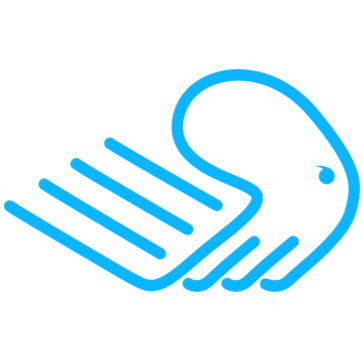
Create Websites with CHEETAH
A first look at the drag'n drop sitebuilder "Cheetah“ (10)
If, on the other hand, you want to change the font size in the smartphone view, you can do so via the "Global font settings". Each "Hn" heading (and, of course, the paragraph font) has a "Mobile Font Size" slider that allows you to infinitely change the size of all texts formatted with the corresponding heading globally (!). This means that this font size change affects ALL web pages of the website currently being edited (i.e. also the pages "ABOUT", "STORE" etc.).
Note: Avoid changing the other font properties as much as possible. These changes (e.g. font and line spacing) also affect the desktop version!
Furthermore, it can be useful not to display individual elements that are relevant for the desktop variant on the smartphone. However, as you have certainly already observed, all elements here lack the "recycle bin". So deleting them is obviously not possible. However, you can always "hide" a selected element instead - the "crossed-out eye", as you already know... In this case, the element will no longer be displayed in the mobile view, but it will be in the desktop view (unless you have made it invisible there as well).
Tip: If you want to display certain elements in the smartphone view but not in the desktop variant, then create these elements in the desktop variant and hide them there. They will still be visible in the mobile view.
In our example, for example, it makes sense to hide the entire penultimate banner with the three logos. And that's what you should do right now...
Furthermore, it happens that you want to arrange the individual elements in the smartphone variant in a different order within their container (i.e. usually the banner they are on). This can also be easily done using the reorder function (category "Arrange banners" in the banner properties). Of course, "reordering" only affects the mobile view. However, if you move whole banners, this will happen simultaneously in the desktop version as well. You have to keep this in mind to avoid any surprises (that's why it's so important to check the preview once in a while).
In "Cheetah" it often happens that elements overlap. This is also quite normal. You have to imagine it like a stack of cards, in which the "cards" are arranged in a kind of z-order from "bottom" to "top". This order of these "layers" is usually set automatically by the editor and you don't have to care about it. But it can happen (especially with transparent elements) that you can no longer focus on an element of a lower hierarchy level with the mouse, because another element is currently on a layer "above" it. It is particularly annoying - especially in the mobile editor view - when the header menu slides under another element. It remains fully visible, but the individual buttons on it may no longer be clickable. But there is a workaround for such a case, too, of course. This can be found in the "Settings" menu in the "Advanced (and Mobile" category). There you can explicitly set the layer position of the selected element using the "Low" and "Top" buttons. It is like moving a card to a new position in the card stack. Otherwise, almost every header menu also contains the functions "Layer Down" and "Layer Up"...
As you can see, it is not a big difficulty to build a quasi-professional website by means of the templates provided by Builderall with a little practice and in a record-breaking time.
What's left to do (we'll assume you've edited the remaining 3 pages in the same way and are quite happy with the result of both the desktop and mobile versions) is to make a few settings and finally publish the website. To do this, click on the "box" at the top left of the "Cheetah" editor, which will take you to the page view of your website.
Each page represented by a tile has a small menu at its bottom right edge, marked by three superimposed dots, which contains the following entries:
-
Settings and preferences
-
Call this page
-
Copy
-
Delete
At this point, we are only interested in the "Settings" page. As its name suggests, some general settings are made here, which will be discussed in detail later. Let's take a quick look at the corresponding input mask. It consists of the categories "General Settings", "SEO Settings", "Popup Settings", "Header Settings" and "Footer Settings". In this "first Look" at "Cheetah", we will only be interested in the "General Settings" category. Here you can explicitly define what this specific web page is called, whether it should act as a "home page" and under which URL it can be reached after publication (of course with the domain name of the website as a prefix). While you are completely free in your choice here, if you want your new website to rank well in search engines like Google or Bing, there are quite a few things to consider here. For example, it is very important to fill out the "Description" field as SEO-compliant as possible. This is because the content of this field appears next to the title in the results entry of a search engine. So what you should do next is to assign to each page of your website a description and page title that optimally characterizes the respective website. Keep "Name" and "Address URL" for now. But don't forget to save your settings.
Next, you still need to activate the GDPR settings.But this is quite simple. In the left side menu in the website view you will find the item "GDPR settings". It opens a page where you only have to check the corresponding checkbox.